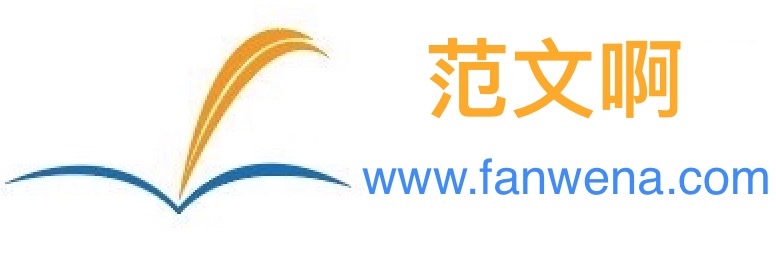现在在我们的身边到处都有金融,那么你会金融的英语句子吗,今天小编就给大家看看金融英语,希望能帮助到大家。
金融英语:成本会计系统
Cost accounting systems provide timely unit product costs through the use of perpetual inventory procedures and predetermined factory overhead rates. To introduce the basic ideas of cost accounting system, we present a simplified illustration to show the flow of product costs as follows:
成本会计系统通过使用永续盘存制和预定的制造费用分配率定期提供产品的单位成本。为了介绍成本会计系统的基本概念,现举一个简例来表述产品成本流程如下:
Acquisition of Materials:Materials inventory account rather than purchases account will be debited under a perpetual inventory system. Both raw materials and factory supplies are included in the inventory account. Materials ledger cards for each type of material or factory supply used make up the subsidiary record.(All figures are assumed)
材料的取得:在永续盘存制下,将借记材料盘存账户而非购料账户。原料和工厂用物料都包括在盘存账户中。为每一类原料设置的材料分类卡构成了辅助记录。(数字都是假设的)
(1) Materials Inventory 1,000
Accounts Payable 1,000
(1)材料盘存 1,000
应付账款 1,000
Recording Factory Payroll:The total factory payroll includes both direct and indirect labor. 工厂工薪的记录:工厂工薪总额中包括直接人工和间接人工。
(2)Factory Payroll 6,000
Factory Payroll Payable 6,000 (2)工厂工薪 6,000
应付工厂工薪 6,000
Recording Other Factory Costs as Overhead:Various items other than materials and labor costs are charged to Factory Overhead account.
其他工厂成本记录为制造费用:除材料和人工成本以外的各个项目记入制造费用账户。
(3) Factory Overhead 800
Accumulated Depreciation 200
Prepaid Insurance 150
Accrued Utilities Payable 100
Various Accounts 350 (3)制造费用 800
累计折旧 200
预付保险费 150
应计未付公用事业费100
其他各账户 350
At this point, all product costs have been accumulated into debit balances in the Materials Inventory, Factory Payroll, and Factory Overhead account. We are now ready to trace these costs through Work in Process and Finished Goods to the Cost of Goods Sold account.
这时,产品的全部成本已累积为材料盘存,工厂工薪和制造费用等账户的借方余额。现在就可以跟踪这些成本,通过在制品和制成品账户转至销货成本账户。
Recording Requisitions of Raw Materials and Factory Supplies:This entry reflects the requisition (evidenced by the material requisitions) of all materials to be used in production. Raw materials(or direct materials) are charged directly to the Work in Process account. Costs of factory supplies(or indirect materials) become part of factory overhead.
原料和工厂用物料领用的记录:这笔记录反映将在生产中耗用的全部材料的领用(由领料单证明)。原料(即直接材料)应直接借记在制品账户,工厂用物料(即间接材料)的成本则成为制造费用的一部分。
(4) Work in Process 600
Factory Overhead 200
Materials Inventory 800 (4)在制品 600
制造费用 200
材料盘存 800
Recording Distribution of Factory Payroll:Work in Process is debited for the direct labor and Factory Overhead is debited for the indirect labor. The total factory payroll is distributed, leaving a zero balance in the Factory Payroll account. The division of total factory payroll into direct and indirect labor is based on a detailed analysis of the job description, wage rates and hours worked of each employee (evidenced by such documents as the time tickets).
工厂工薪分配的记录:直接人工应借记在制品账户,间接人工则借记制造费用账户。工厂工薪的总额既已分配,工厂工薪账户留下的余额就等于零,把工厂工薪总额区分为直接人工和间接人工,要根据对工作说明,工资率以及每一雇员的工作时数的详细分析(由计时单这样一些凭证证明)。
(5) Work in Process 500
Factory overhead 100
Factory payroll 600 (5)在制品 500
制造费用 100
工厂工薪 600
Recording Application of Factory Overhead:Most firms do not apply the actual amount of overhead incurred each period to the goods manufactured during that period. Instead, overhead is applied at average rates that reflect estimates of total annual production volume and total overhead costs for the year. Predetermined overhead rates are computed by estimating the coming year’s total factory overhead cost and dividing it by an estimate of some unit of activity (such as direct labor hours, direct labor costs or factory machine hours ).
制造费用分配的记录:大多数企业不是按照每期实际发生的制造费用金额分配于该期内制造的产品,而是按照反映全年总产量和全年制造费用总额估计数的平均分配率来分配制造费用。在计算预定制造费用分配率时,要估计翌年的制造费用总额,而后除以某种估计的工作量(例如直接人工小时,直接人工成本,或工厂机器工作小时)。
(6) Work Process 1,200
Factory Overhead 1,200
(240% of direct labor cost) (6)在制品 1,200
制造费用 1,200
(直接人工成本的240%)
Recording Completed Production:This entry reflects the assignment of costs to completed production and the transfer of those costs from Work in Process to Finished Goods.
完工产品的记录:这一分录反映分配于完工产品的成本,并把这些成本从在制品账户转入制成品账户。
(7) Finished Goods 2,000
Work in Process 2,000
(7)制成品 2,000
在制品 2,000
Suppose that the firm produces a single product and the units completed in that period are 1,000 the unit product cost would be $2.
假设该企业只生产一种产品,当期的完工产量为1,000件,则产品单位成本为$2.
Recording Cost of Goods Sold:This entry transfers the cost of finished products sold (700 unit @ $2) to the Cost of Goods Sold account.
销货成本的记录:这一分录将已出售的制成品成本(700件@$2)转入销货成本账户。
(8) Cost of Goods Sold 1,400
Finished Goods 1,400 (8)销货成本 1,400
制成品 1,400
Under-or overapplied overhead (an overapplied overhead $50 in our example ) is expected at the end of interim accounting periods and is shown as deferred debits or credits on interim balance sheets. If the amount is immaterial, it is closed to Cost of Goods Sold at year-end; if material, it may be allocated among the Work in Process, Finished Goods and Cost of Goods Sold accounts.
在年度内各会计期期末,可望出现少分配或多分配制造费用(例中为多分配制造费用$50,在中期资产负债表上列示为递延借项或递延贷项。如金额不大,在年终时将结转于销货成本账户;如金额巨大,则可在在制品,制成品和销货成本等账户之间进行分配。
金融英语阅读:货币形式
货币形式
fiat money has not only no particular value in use, it doesn't even really have a value in exchange except that which is decreed that it would have.
名义货币不仅仅没有什么特别的价值,而且在商品的交换中它本身根本没有价值。它拥有的只是法律所赋予它的价值。
so fiat money is money which is intrinsically worthless. and its value exists by virtue of the fact that it is generally acceptable. and fiat money, needless to say, is one of the most mysterious inventions of the human mind, and no economist has managed to explain exactly why it is that people will generally accept something as valuable when it clearly has no value other than that which it is decreed to have.
因此,名义货币从它的本质来说实际上一钱不值。它的价值只在于它能够获得普遍的接受。毫无疑问,名义货币是人类最神奇的发明之一。任何经济学家都还无法确切解释,为什么人们能够把一种除了法定的价值外显然没有任何价值的东西作为宝贵的东西来普遍接受。
a credit instrument is an obligation. and it's used as money because it has value. and the value that it has, of course, is a value which is based upon its credit-worthiness, in other words, how much credit or how much credence people give to the promise which is actually written down. what i'm receiving or using as an instrument for money purposes is somebody else's obligation. their preparedness to do something for me which might be to give me fiat money. that could be the promise which is incorporated in the cheque or the bill of exchange.
信用手段是一种契约。它可以被当作货币使用是因为它也有价值。当然,它的价值是建立在它的信用声誉之上的。换句话说,也就是要看人们能够给予这些写成文字的保证多大程度的信任。我作为货币收取的票据文件是对方的一种债务契约,是保证他们准备为我做一些事,比如要支付给我法定货币。这种保证可能会以支票或汇票的方式来体现。
1.fiat money 名义货币,法定货币
2.credit money 信用货币
3.credit instrument 信用手段,信用安排
4.credit - worthiness 信贷价值,信用声誉
5.简单概括来说,名义货币实际上是把货币形态象征化,也就是货币的实体与额面价值分离,货币代表的价值大于货币本身材料的价值。
这也就是�


